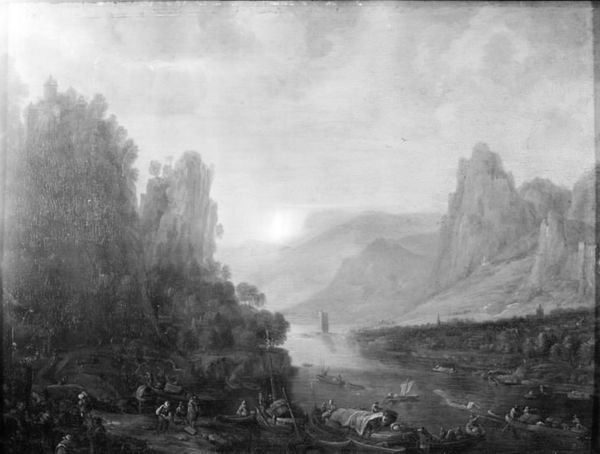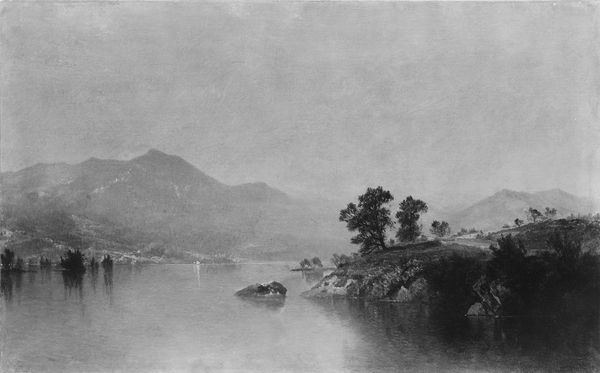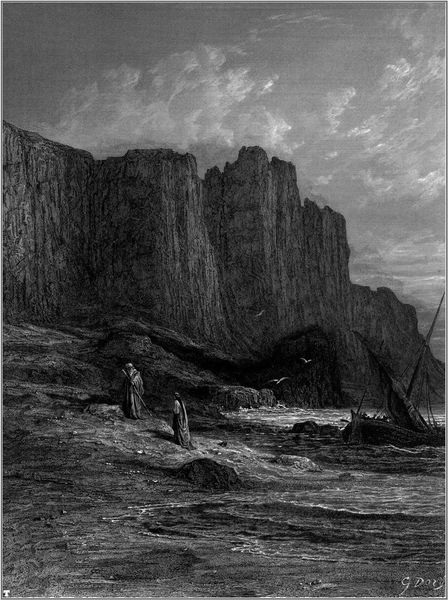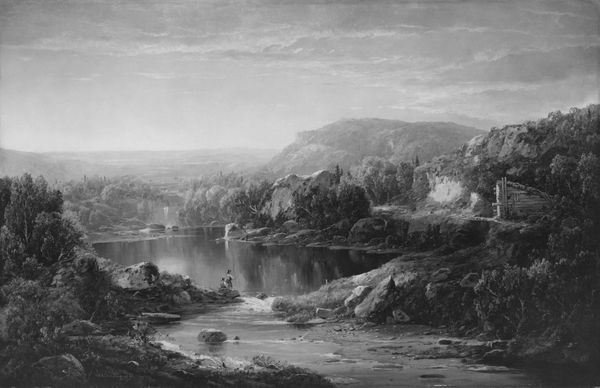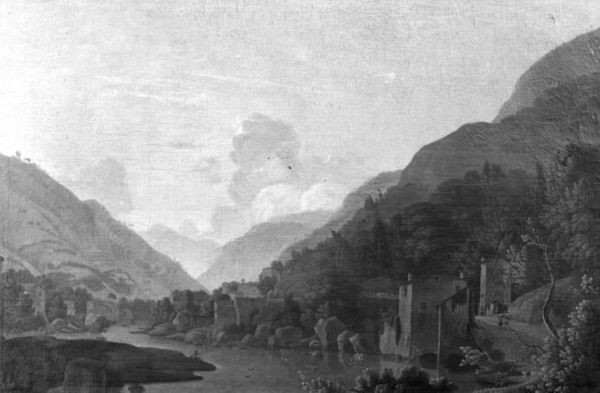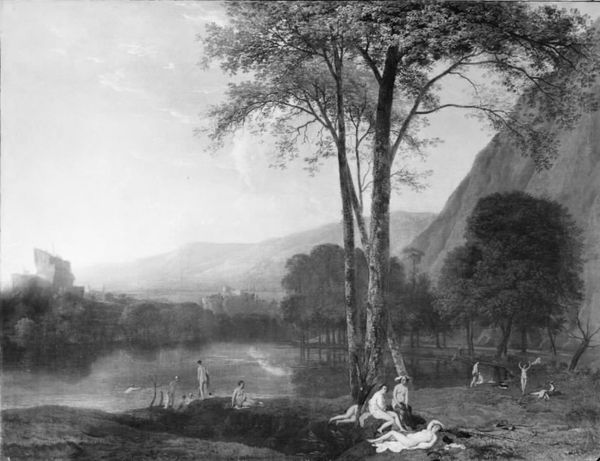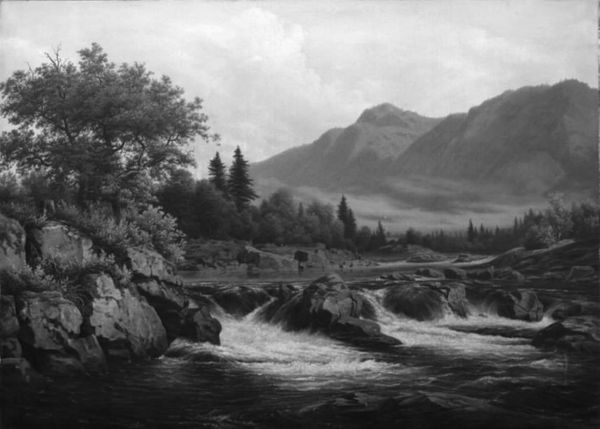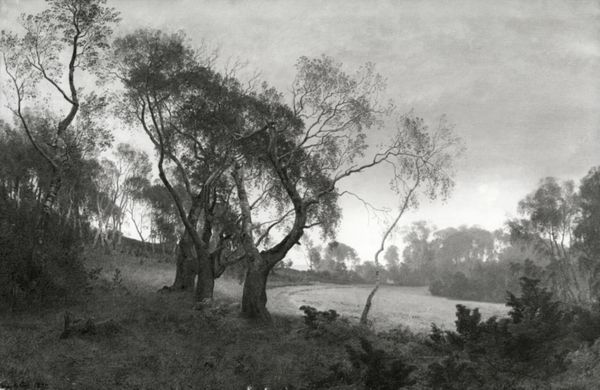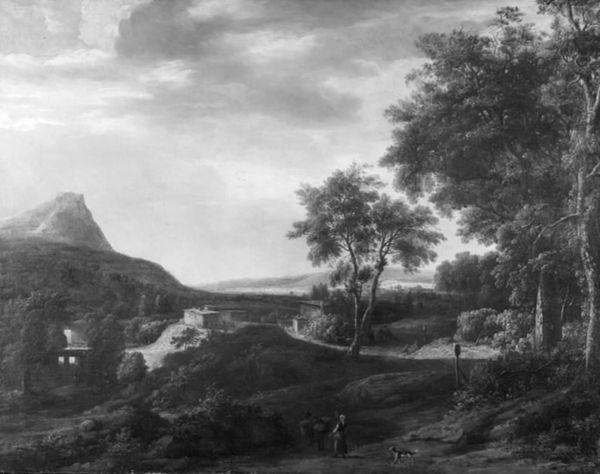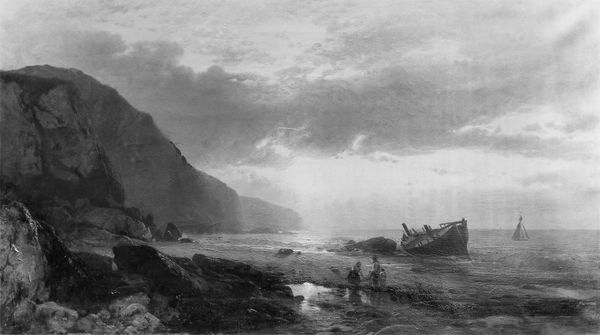
painting
#
baroque
#
dutch-golden-age
#
painting
#
landscape
#
monochrome colours
#
figuration
#
black and white
#
monochrome photography
#
genre-painting
#
monochrome
#
skyscape
#
monochrome
Dimensions: 67 cm (height) x 58 cm (width) (Netto)
Curator: I’m really drawn to this black-and-white painting, there’s almost something photographic about it. A sort of old Hollywood movie feel… Editor: What you’re noticing might have something to do with the ways Herman van Swanevelt—the artist behind this landscape with bathers which dates from somewhere between 1615 and 1655—played with light. It's a magnificent oil painting! It demonstrates his mastery of Dutch Golden Age and Baroque styles. You know, considering the painting's themes of nature and the nude figure, I'm reminded of the politics around whose bodies get to be represented, and under what circumstances. Curator: Mmh, I see your point. But when I look at it, I just think about freedom… I can almost hear the sound of the water rippling. It’s a melancholic scene. The black and white heightens this stillness, doesn’t it? Makes you want to pause everything for a while and think, be, float… Editor: Indeed. The monochrome palette certainly strips away distractions, focusing attention on form and composition, guiding us towards an appreciation for nature—as we try to see it without the filter of colonial fantasy and domination. Considering this, it would be good to have a dialogue between our responsibility toward earth care, pleasure, freedom, and the historical weight that marks every corner of nature in our post-industrial era. Curator: Ah yes, now you're pushing me down an existential rabbit hole. But okay, what would it mean for that dialogue to actually become part of how we see paintings such as these ones? Editor: Well, it requires, among other things, a continuous unpacking of Western aesthetics to acknowledge the different voices and forms through which the Global South experiences art and representation, in ways that critique class inequality, the historical violence of coloniality, and white-centric canons, which tend to shape art production in the cultural industries and art history. Curator: Always on point. Thank you. You’ve truly broadened my perspective about the way bodies are presented and the possible interpretations of this timeless and soothing painting. Editor: And you remind me that beyond critique and intellectual work there’s also pleasure and respite to be found. Thank you.
Comments
No comments
Be the first to comment and join the conversation on the ultimate creative platform.



